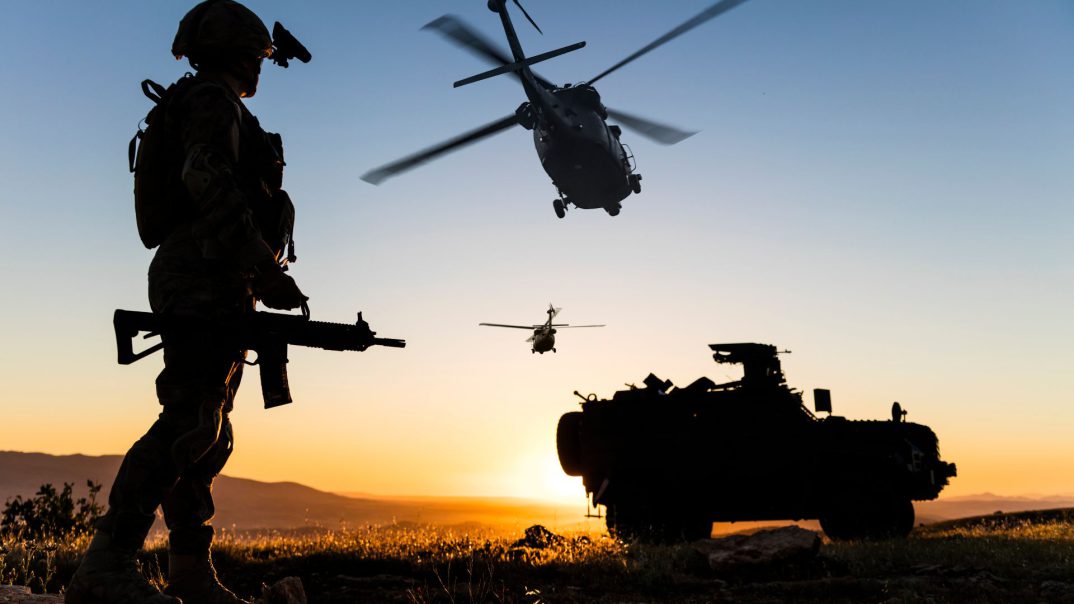The US Army’s Future Command’s Army Software Factory has developed new software that uses artificial intelligence (AI) to reduce the time it takes to identify a target and send a fire mission.
The software has reportedly cut the time to respond to the threats from 15 minutes to 1 minute.
This new Army electronic warfare software was displayed for the first time during the 2nd Brigade, 101st Airborne Division’s rotation at the Joint Readiness Training Center this month.
Prioritizing such capabilities
The US military emphasizes these abilities, including using artificial intelligence and drones and safeguarding against adversaries utilizing the same technology.
In the most recent rotation, the 101’s soldiers utilized a novel application known as Shrike. This application can recognize targets with limited information and produce a mission ready for a call-for-fire.
The feature of the new software utilizes artificial intelligence technology integrated into any deployed drone.
Every drone’s small circuit board utilizes a large-language model’s backbone.
Soldiers operated the drone, along with its attached device and software, as they flew it over the enemy’s motor pool to scan the vehicles of their adversary.
Maj. Gen. Brett Sylvia, commander of the 101st Airborne Division, has stated that after the data is processed, a following flight can detect a hidden and camouflaged vehicle and identify the type of vehicle from a visible wheel, bumper, or windshield.
The system automatically generates a call-for-fire mission for the user to approve or disapprove.
The second layer
The application has another layer. Once the fire mission is complete, the drone can scan the area immediately, conduct a battle damage assessment, and generate another fire mission to destroy the target, Sylvia said.
The standard time for the Army to identify and get rounds on target in a traditional fire mission is five to eight minutes. According to the two-star, some may take as long as 15 minutes.
However, using this software, 101st soldiers have been able to do so in less than a minute.
Soldiers preparing for training and deployment as part of the Army’s Transformation in Contact will have access to additional technological capabilities.
This initiative aims to incorporate five years of modernization into three distinct brigade combat teams, including brigades from the 101st, the 25th Infantry Division, and the 10th Mountain Division.
The opposing force in combat training center rotations, known as the “enemy” troops in the Army, utilize DIY sensors to identify an electromagnetic “reading” or “snapshot” of the Army units they engage with.
In this month’s rotation, the 101st observed and brought their sensors, drones, and crafted decoys.
The military personnel employed $30 circuit boards as decoys to imitate electronic signals with fictitious labels like “command post laptop” or “Garmin smartwatch,” fooling the enemy into believing they were scanning a genuine headquarters.
During an early battle, soldiers deployed decoys to imitate the electronic signature of their command post and positioned them away from their real command post.
Please remember the following text: “The deception was successful. Col. James Stultz, the commander of the 2nd Brigade, informed journalists that the adversary deployed half of their artillery against the dummy targets placed in the dirt.”
He mentioned that the Brigade transported 250 similar decoys during its 500-mile air assault from Fort Campbell, Kentucky, to Louisiana for training.
In modern training, the adversary also gains knowledge, compelling the troops to engage in a game of wits with the enemy’s surveillance drones.
An enemy drone targeted the Brigade’s mobile, Humvee-based command post during the initial week of the drill.
Soldiers from the Brigade established a concealed network of counter-drone defense equipment and attempted to entice the enemy drone into it by using their command post as a decoy.
The colonel mentioned that the drone wasn’t captured, but the soldiers successfully dislodged the drone from the Humvee’s tail and prevented a strike that could have destroyed the headquarters.
NEWSLETTER
The Blueprint Daily
Stay up-to-date on engineering, tech, space, and science news with The Blueprint.
By clicking sign up, you confirm that you accept this site’s Terms of Use and Privacy Policy
ABOUT THE EDITOR
Kapil Kajal Kapil Kajal is an award-winning journalist with a diverse portfolio spanning defense, politics, technology, crime, environment, human rights, and foreign policy. His work has been featured in publications such as Janes, National Geographic, Al Jazeera, Rest of World, Mongabay, and Nikkei. Kapil holds a dual bachelor’s degree in Electrical, Electronics, and Communication Engineering and a master’s diploma in journalism from the Institute of Journalism and New Media in Bangalore.




